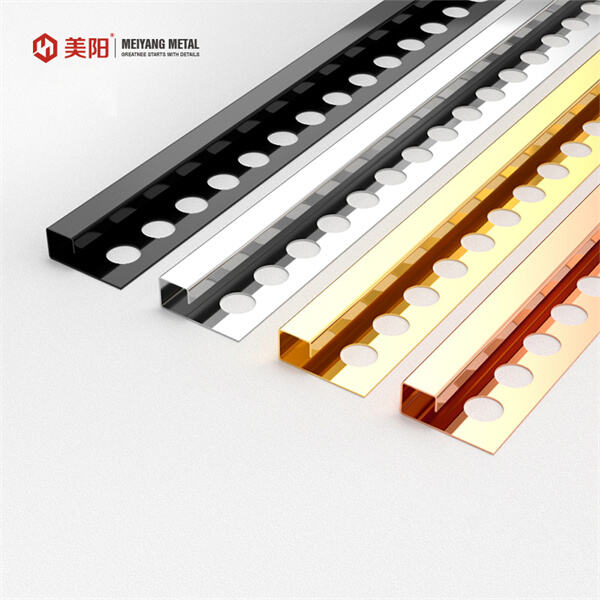Tile edging and trim is used at the completion of tiling. Not only do they improve the look of your tiles, but also protect them from damage. Tile projects mean more than removing them. The finishing touches too also go a long way towards changing the look of an entire room or revamping your home with interestingly designed tiles done in new ways you may not have thought possible. Some varieties of edging and trim that you can use to enhance your project. Today well explain why you need ceramic tile edging trim, the types of trims to use with your tiles, how t select them for yor next proect installaion DIY Tips maintenance issue.
Edging and trim can enhance the look of your tile, as well as its longevity. Complete the tile edging as a last note — this is key, because otherwise you will likely have very sharp edges on your new tiles. × This also keeps the tile from chipping and cracking. You will use trim when your tile project is transitioning from one type of tile to another and help the layout continue in a neat, finished manner. Your tiles work would not have been completed, and it may lead to a longer service life. In addition, well-placed edging/trim can keep water/mud from penetrating the edges and creating further damage.
Edging & Trim: There are all kinds of edging and trim available that can help enhance the beauty of your custom tile. Common styles consist of bullnose (a rounded edge that can smooth out the overall look) and flat liners (straight pieces which, if added to walls in a horizontal or vertical pattern with other types of tile act as decorative accents). In addition, you have the ability to choose among various materials such as metal or plastics produced by 3D printing and natural stone. There are benefits to each of the different types of edging and trim. Metal edging, for example will won't wear out very fast but stone may provide a fancier and elegant appearance. So, it is crucial that you investigate all available alternatives and come up with a personalized look which suits your design.
The right edging and trims that work for your project will be influenced by what you want to do with the tile style, as well the type of tile you are using. Consider the color, texture & type of edging and trim that you may need to ensure it complements overall design work. If your tiles are very noticeable, using a trim color that blends in rather than stands out will be the order of the day! Also remember to ensure that the edging and trim are large or small enough to adequately surround your tiles. It gives a cohesive, pulled together look.

DIY Browse DIY Advice How to Install a Beadboard PanelingThis article will discuss a diy tips that you should know, specifically pertaining to installing of edging and molding tiles.

If you feel confident in your skills and have access to the proper tools, installing edging and trim yourself is possible. Step 1: Measure and cut the edging Trim optionalこれはフィットをよくするためにとても So how do you add them to the tiles: By glue or screws. It is important to note the specific instructions of your edging and trim, as well as your particular tile with respect to adding some glue or screws. Level everything to have a professional looking finish. A lot of time spent in this step will really pay off with the looks of your project at the end.

Once you have laid your edging and trim work its imperative that you look after them so they have a long live and stay looking nice. A soft cloth with mild soap and warm water is perfect for cleaning your edging and trim. It will not only remain them looking fresh overview, but it a soft clean as well. Do not use harsh cleaners in combination with hard scrubbing, both of these things can damage the edging and trim. If you see any damage, such as chipping or wearing-out over time, this would be a good indicator that they might need replacing to retain the best looks of your tile project! Consistency is the main element in maintaining your project beautiful throughout time.